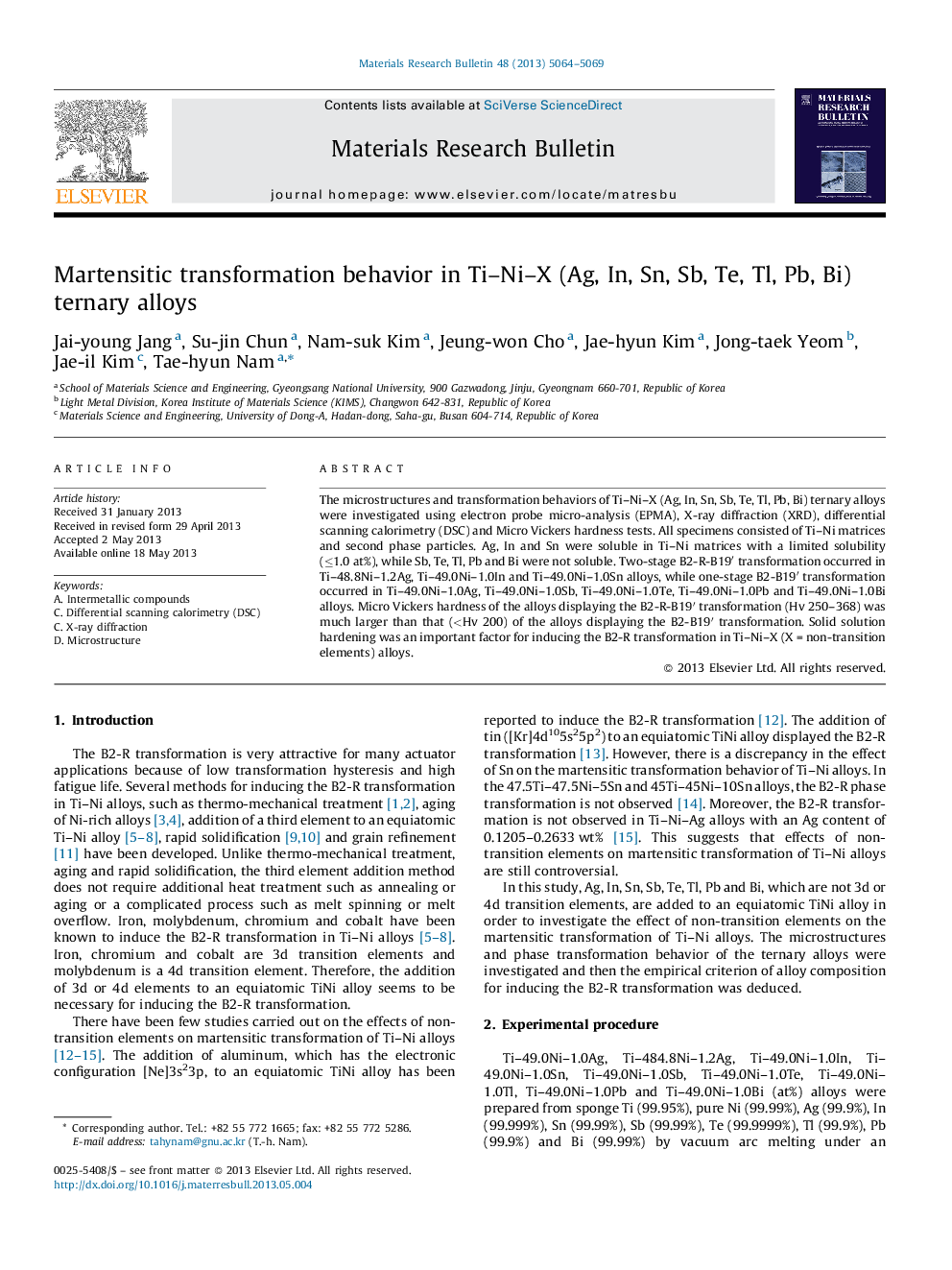| Article ID | Journal | Published Year | Pages | File Type |
|---|---|---|---|---|
| 1489248 | Materials Research Bulletin | 2013 | 6 Pages |
•Ag, In and Sn were soluble in TiNi matrix, while Sb, Te, Tl, Pb and Bi were not.•The B2-R-B19′transformation occurred in Ti-Ni-(Ag, In, Sn) alloys.•Solid solution hardening was essential for inducing the B2-R transformation.
The microstructures and transformation behaviors of Ti–Ni–X (Ag, In, Sn, Sb, Te, Tl, Pb, Bi) ternary alloys were investigated using electron probe micro-analysis (EPMA), X-ray diffraction (XRD), differential scanning calorimetry (DSC) and Micro Vickers hardness tests. All specimens consisted of Ti–Ni matrices and second phase particles. Ag, In and Sn were soluble in Ti–Ni matrices with a limited solubility (≤1.0 at%), while Sb, Te, Tl, Pb and Bi were not soluble. Two-stage B2-R-B19′ transformation occurred in Ti–48.8Ni–1.2Ag, Ti–49.0Ni–1.0In and Ti–49.0Ni–1.0Sn alloys, while one-stage B2-B19′ transformation occurred in Ti–49.0Ni–1.0Ag, Ti–49.0Ni–1.0Sb, Ti–49.0Ni–1.0Te, Ti–49.0Ni–1.0Pb and Ti–49.0Ni–1.0Bi alloys. Micro Vickers hardness of the alloys displaying the B2-R-B19′ transformation (Hv 250–368) was much larger than that ( Graphical abstractFigure optionsDownload full-size imageDownload as PowerPoint slide
